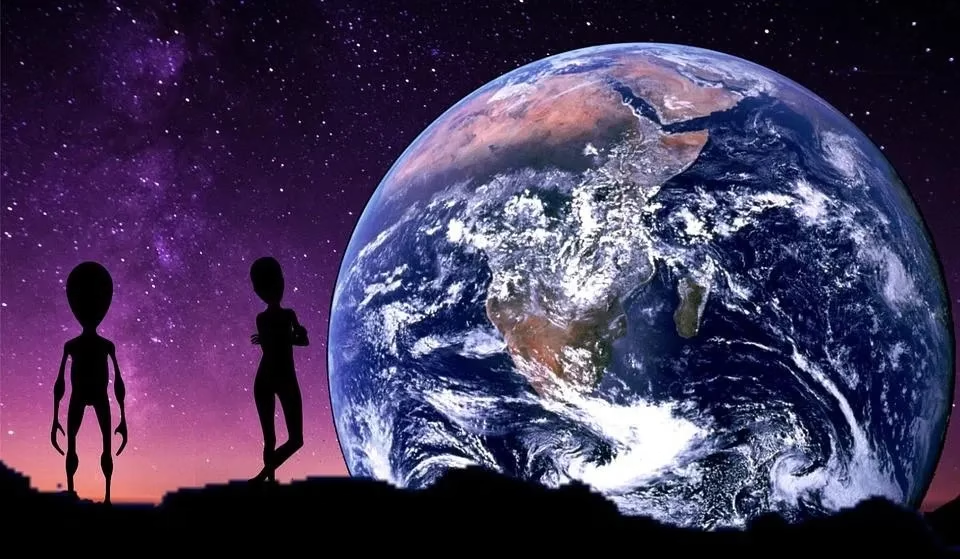
Historic Breakthrough in the Search for Alien Life
For centuries, humanity has gazed at the stars, wondering: Are we alone in the universe? Today, scientists may be closer than ever to answering that question.
A team of astronomers using NASA’s James Webb Space Telescope (JWST) has uncovered the strongest evidence yet that a distant planet—K2-18b, located 124 light-years away—could harbor conditions suitable for life. Even more astonishing, they detected chemical signatures in its atmosphere that, on Earth, are only produced by living organisms.
This discovery has sent shockwaves through the scientific community, sparking excitement—and cautious optimism—that we may finally be on the verge of confirming life beyond our solar system.
The Discovery: What Did Scientists Find?
1. The Key Chemicals: DMS and DMDS
The research, led by astronomers at the University of Cambridge, focused on K2-18b, a hycean (hydrogen-rich ocean) planet about 8.6 times the mass of Earth. Using the JWST’s powerful infrared sensors, the team detected traces of:
- Dimethyl sulfide (DMS) – A compound primarily produced by marine phytoplankton on Earth.
- Dimethyl disulfide (DMDS) – Another organic molecule linked to biological activity.
“These findings are unprecedented,” said Professor Nikku Madhusudhan, the study’s lead researcher. “On Earth, these chemicals are almost exclusively biosignatures—meaning they come from life. If confirmed, this could be our first real evidence of a habitable exoplanet.”
Also Read: 10 Facts About How AI is Transforming Education
2. How Was This Detected?
Scientists used a technique called transmission spectroscopy, where they observed how starlight filtered through K2-18b’s atmosphere as it passed in front of its host star. By analyzing the light’s absorption patterns, they identified the chemical fingerprints of these molecules.
“The data was consistent across multiple observations,” said co-author Mans Holmberg from the Space Telescope Science Institute. “This isn’t a fluke—it’s a real detection.”
Why Is K2-18b Such a Promising Candidate for Life?
1. Located in the “Goldilocks Zone”
K2-18b orbits a red dwarf star in the constellation Leo, within the habitable zone—where temperatures could allow liquid water to exist.
- Too close to the star? The planet would be scorching.
- Too far? It would freeze.
- Just right? Liquid oceans could form—and where there’s water, life as we know it could thrive.
2. Previous Clues: Methane and Carbon Dioxide
In 2023, the same team found methane (CH₄) and carbon dioxide (CO₂) in K2-18b’s atmosphere—both of which are key indicators of potential biological activity.
- On Earth, methane is produced by microbes in oxygen-free environments (like deep oceans).
- Carbon dioxide is a byproduct of life and geological processes.
“The combination of these gases, along with DMS, makes this planet incredibly intriguing,” Madhusudhan explained.
3. A Possible Water World
Given its size and atmospheric composition, scientists believe K2-18b could be a “hycean” planet—a theorized class of worlds with:
- A hydrogen-rich atmosphere
- A vast global ocean covering its surface
If true, this would make it a prime candidate for microbial or even more complex life.
How Reliable Are These Findings?
1. The 99.7% Confidence Level
The study, published in the Astrophysical Journal Letters, has a 99.7% confidence level—meaning there’s only a 0.3% chance the detection is a false positive.
However, in astrophysics, the gold standard is five-sigma certainty (99.99994%), so more data is needed.
2. Could There Be Another Explanation?
While exciting, scientists remain cautious. Some possibilities include:
- Unknown chemical processes producing DMS without life.
- Instrumental errors (though JWST is the most advanced space telescope ever built).
“Extraordinary claims require extraordinary evidence,” said Madhusudhan. “We need follow-up observations to rule out non-biological sources.”
The Bigger Picture: Other Potential Signs of Alien Life
This isn’t the first time scientists have found hints of extraterrestrial life. Here are some other key discoveries:
1. Organic Molecules on Meteorites (2011)
NASA researchers found nucleobases (DNA components) in Antarctic meteorites, suggesting these building blocks of life may be common in space.
2. Sugar Molecules in Space (2012)
Astronomers detected glycolaldehyde (a sugar molecule) in a distant star system—a key ingredient for RNA, which is essential for life.
3. Enceladus’s Organic-Rich Plumes (2023)
Saturn’s moon Enceladus shoots geysers of water into space, containing organic compounds—raising hopes of a subsurface ocean with life.
4. The 2024 Greenhouse Gas Study
Scientists identified five artificial greenhouse gases that, if detected on exoplanets, could indicate industrial alien civilizations.
5. The Mars Methane Controversy (2005-2024)
In 2005, NASA’s Mars rovers detected methane spikes, which some believed could be from microbes. However, later studies suggested geological origins, showing how complex these detections can be.
What’s Next in the Search for Alien Life?
1. More Observations with JWST
The Cambridge team has requested additional telescope time to:
- Confirm the DMS detection at five-sigma certainty.
- Search for other biosignatures, like oxygen or chlorophyll.
2. Future Missions to Study Hycean Worlds
Upcoming telescopes, like the Habitable Worlds Observatory (HWO), could provide even clearer data on exoplanet atmospheres.
3. The Ultimate Question: Are We Alone?
“If this holds up, it changes everything,” said Madhusudhan. “We may finally have an answer to one of humanity’s oldest questions.”
Conclusion: A New Era in Astrobiology
The discovery of potential biosignatures on K2-18b is a monumental step forward in the search for extraterrestrial life. While more research is needed, the implications are staggering:
- We may not be alone.
- Life could be far more common in the universe than we thought.
- Future missions could soon find definitive proof.
As JWST continues scanning the cosmos, one thing is clear: We are living in the golden age of exoplanet discovery—and the biggest revelation may still be ahead.








